Blog > The Ultimate Guide to Choosing the Right Materials for Your Patio Deck.
The Ultimate Guide to Choosing the Right Materials for Your Patio Deck.
Welcome to "The Ultimate Guide to Choosing the Right Materials for Your Patio Deck." Building a patio deck is an exciting endeavor that adds both functionality and beauty to your outdoor space. However, selecting the right materials can be a daunting task, as there are countless options available, each with its own benefits and considerations. In this comprehensive guide, we will walk you through everything you need to know about choosing the perfect materials for your patio deck. From exploring different decking materials and their unique characteristics to considering factors such as durability, maintenance, aesthetics, and environmental impact, we will provide you with expert insights and practical tips to help you make an informed decision. Get ready to embark on a journey that will empower you to create the perfect patio deck that meets your needs, suits your style, and stands the test of time. Let's dive in and discover the ultimate guide to selecting the right materials for your patio deck.

Comparing Different Decking Materials: Wood, Composite, and PVC
When it comes to decking materials, there are several options to consider, including wood, composite, and PVC. Each material has its own unique characteristics, advantages, and considerations. Wood decking provides a natural and timeless appeal, with options like cedar, redwood, and pressure-treated lumber.
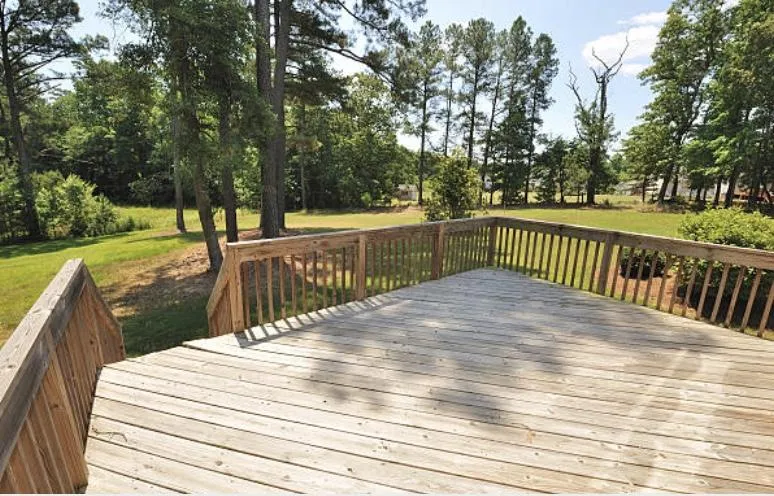
Composite decking offers a blend of durability and low maintenance, often made from a combination of wood fibers and recycled plastics. PVC decking, on the other hand, is known for its exceptional durability and resistance to moisture, rot, and insects. Understanding the differences between these decking materials is crucial in choosing the right one for your project. In this article, we will delve into the pros and cons of wood, composite, and PVC decking, helping you make an informed decision and select the ideal material that suits your preferences, budget, and lifestyle.
Pros and Cons of Natural Wood Decking for Your Patio
Natural wood decking offers a timeless and authentic appeal that many homeowners find appealing. One of the significant advantages of natural wood decking is its aesthetic charm, as it adds warmth, character, and a natural beauty to any outdoor space. Wood decks can be stained or painted in a variety of colors to match your desired style. Another advantage is the versatility of wood, allowing for custom designs and intricate detailing. However, it's important to consider the potential drawbacks of natural wood decking as well.
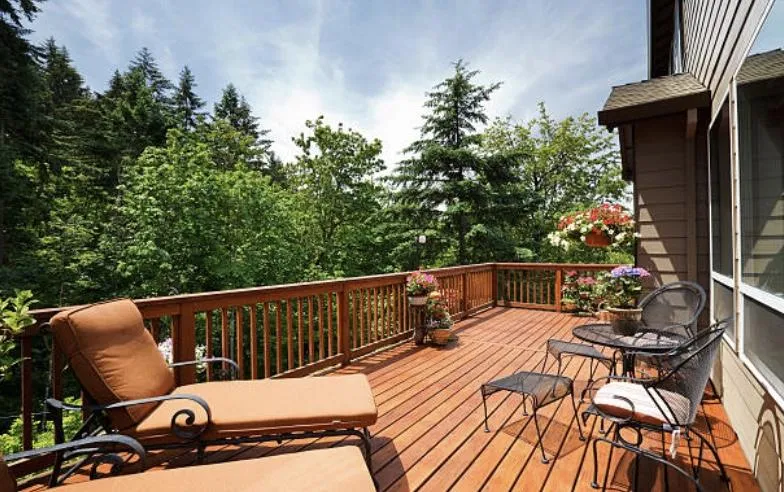
Wood requires regular maintenance, such as sealing and staining, to protect it from moisture, rot, and insect damage. Additionally, natural wood decking may be susceptible to warping, splitting, and fading over time. Cost can also be a factor, as wood decks tend to have a higher upfront expense compared to other decking materials. By weighing the pros and cons of natural wood decking, you can make an informed decision on whether it is the right choice for your patio deck project.
Exploring the Benefits of Composite Decking for Long-lasting Durability
Composite decking has gained immense popularity in recent years due to its outstanding durability and low maintenance requirements. One of the significant benefits of composite decking is its resistance to rot, decay, and insect damage, thanks to its composition of recycled plastics and wood fibers. Unlike natural wood, composite decking does not require regular sealing, staining, or painting to maintain its appearance.

It is highly resistant to fading, staining, and warping, making it an excellent choice for areas with high moisture or harsh weather conditions. Additionally, composite decking is available in a wide range of colors, textures, and finishes, allowing homeowners to achieve the desired look without sacrificing durability. While composite decking tends to have a higher upfront cost compared to natural wood, its long-term benefits, including its longevity and minimal maintenance requirements, make it a compelling option for those seeking a durable and hassle-free patio deck solution.
Understanding the Advantages of PVC Decking for Low-Maintenance Outdoor Spaces
PVC decking is an excellent choice for homeowners seeking a low-maintenance outdoor space. One of the key advantages of PVC decking is its remarkable durability and resistance to moisture, rot, and insect damage. Unlike natural wood or composite decking, PVC decking does not absorb water, making it highly resistant to mold and mildew growth. This makes it particularly suitable for areas with high humidity or frequent exposure to water, such as around pools or in coastal regions.
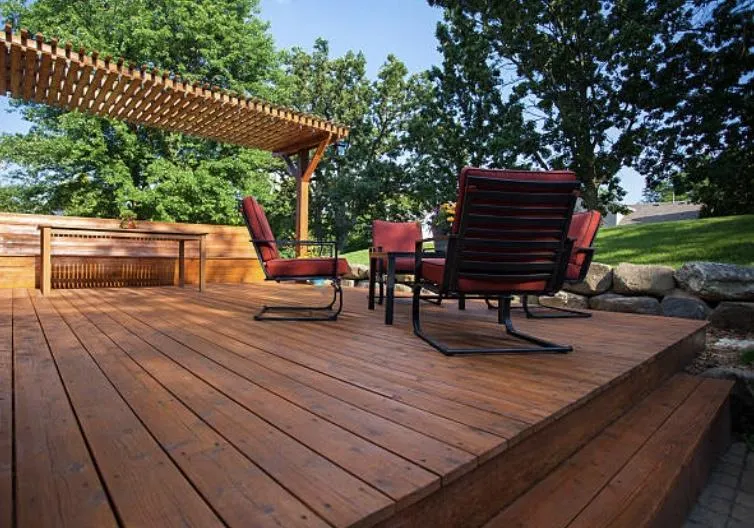
Another significant advantage of PVC decking is its low-maintenance nature. It requires no sealing, staining, or painting, and can be easily cleaned with soap and water. PVC decking is also highly resistant to fading, staining, and scratching, ensuring a long-lasting and attractive outdoor space. While PVC decking may have a higher upfront cost, its longevity, durability, and minimal maintenance requirements make it a cost-effective choice in the long run for homeowners looking to enjoy a beautiful, hassle-free patio deck.
Factors to Consider When Selecting Decking Materials for Your Climate
When choosing decking materials for your patio, it is essential to consider the climate in which you live. Different climates present unique challenges and considerations that can impact the performance and longevity of your deck. In regions with hot and dry climates, for example, decking materials that resist fading and are less prone to heat absorption may be preferable. In contrast, areas with high humidity or frequent rainfall require decking materials with excellent moisture resistance to prevent mold, rot, and warping.
Additionally, coastal regions demand materials that can withstand saltwater exposure and resist corrosion. By understanding the specific climate-related factors that can affect your deck, such as temperature fluctuations, humidity levels, precipitation, and exposure to the elements, you can make an informed decision and choose decking materials that are best suited for your particular climate. Taking these factors into account will help ensure that your patio deck not only looks beautiful but also stands the test of time in your specific climate conditions.

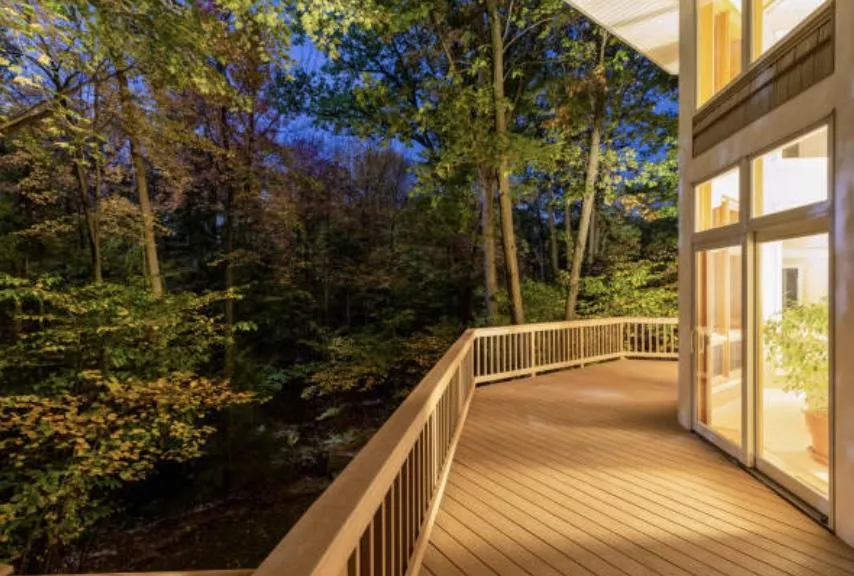
Sustainable Decking Options: Eco-Friendly Choices for a Greener Patio
In today's environmentally conscious world, sustainable decking options have become increasingly popular among homeowners. Choosing eco-friendly decking materials allows you to create a greener patio while reducing your carbon footprint. One sustainable option is composite decking made from recycled materials, such as reclaimed wood fibers and recycled plastics. By utilizing recycled materials, composite decking helps reduce deforestation and landfill waste. Another eco-friendly choice is bamboo decking, known for its fast growth and renewability. Bamboo is a highly sustainable material that can be harvested without causing harm to the environment. Additionally, some decking materials are manufactured using sustainable production processes that minimize energy consumption and emissions. By opting for sustainable decking options, you can enjoy a beautiful patio while contributing to the preservation of our planet.
Enhancing Aesthetics: Choosing Decking Materials to Match Your Home's Style
When selecting decking materials for your patio, it is important to consider the aesthetics and how they will complement your home's style. Decking materials come in a wide range of colors, finishes, and textures, allowing you to achieve the desired look and seamlessly integrate your patio with the existing architecture. For a classic and timeless appeal, natural wood decking offers warmth and natural beauty that can complement various home styles.
On the other hand, if you prefer a more contemporary or modern look, composite or PVC decking with sleek lines and a variety of color options may be the ideal choice. Additionally, some decking materials can be customized to mimic the appearance of natural wood while providing the benefits of low maintenance and durability. By selecting decking materials that align with your home's style, you can create a cohesive and visually appealing outdoor space that seamlessly blends with the overall aesthetic of your property.

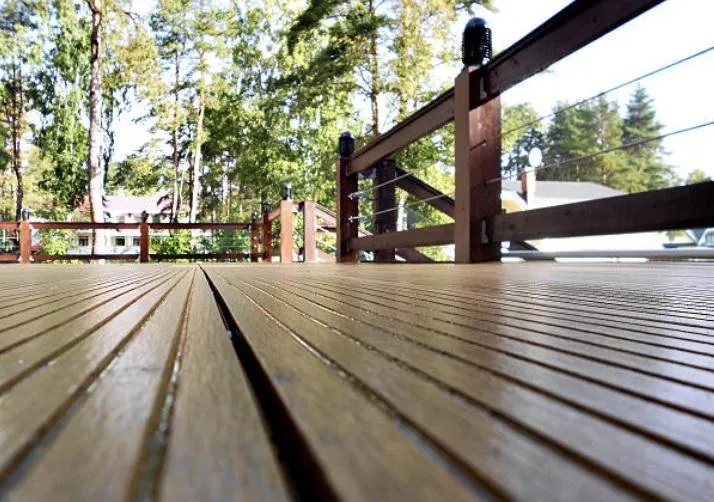
Budget-Friendly Decking Options: Finding Affordable Materials without Sacrificing Quality
If you're working with a limited budget for your patio deck project, rest assured that there are budget-friendly decking options available that don't compromise on quality. One such option is pressure-treated lumber, which is widely recognized for its affordability and durability. Pressure-treated wood is treated to resist rot, decay, and insect damage, making it a cost-effective choice for many homeowners. Another budget-friendly option is composite decking, which offers the look and feel of natural wood but requires less maintenance and lasts longer. While composite decking may have a higher upfront cost than pressure-treated wood, its long-term durability and reduced maintenance requirements can result in significant cost savings over time. Additionally, some manufacturers offer budget-friendly lines of composite decking that provide an excellent balance of quality and affordability. By exploring these budget-friendly decking options, you can create a beautiful and functional patio deck that fits within your financial constraints without compromising on quality.
Maintenance Tips for Different Decking Materials: Ensuring Longevity and Beauty
To ensure the longevity and beauty of your patio deck, proper maintenance is essential regardless of the decking material you choose. For natural wood decking, regular cleaning and sealing are crucial to protect it from moisture, UV rays, and fungal growth. This involves annual cleaning with mild detergent and water, followed by the application of a sealant or stain to prevent warping, splintering, and fading.
Composite and PVC decking, on the other hand, require less maintenance but still benefit from routine cleaning. Simply using a mild soap and water solution, along with a soft-bristle brush, can remove dirt and debris. It's important to avoid using harsh chemicals or abrasive cleaning tools that may damage the surface. Additionally, it's a good practice to inspect your deck regularly, looking for any signs of wear, loose fasteners, or damage that may need repair. By following these maintenance tips specific to your decking material, you can ensure the long-lasting beauty and performance of your patio deck for years to come.
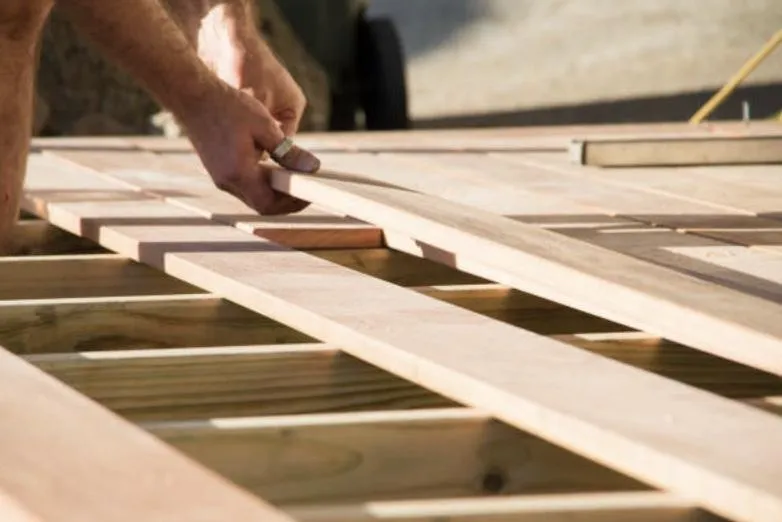

Expert Advice on Selecting the Right Decking Materials for Your Specific Needs
In conclusion, selecting the right decking materials for your specific needs is a critical decision that can greatly impact the outcome of your patio deck project. By considering factors such as durability, maintenance requirements, climate suitability, aesthetics, and budget, you can make an informed choice that aligns with your preferences and lifestyle. However, if you're seeking expert guidance and professional assistance throughout the process, look no further than Magic Man Landscaping and Construction. With their extensive experience and commitment to excellence, they can provide valuable advice on selecting the perfect decking materials tailored to your specific needs. Whether you're looking for natural wood, composite, or PVC decking, their team will ensure exceptional craftsmanship and a seamless installation process. Trust Magic Man Landscaping and Construction to bring your vision to life and create a stunning patio deck that exceeds your expectations. Contact them today to embark on your decking journey with confidence.
Contact Us
Service Hours
Social Media
Blog > The Ultimate Guide to Choosing the Right Materials for Your Patio Deck.
The Ultimate Guide to Choosing the Right Materials for Your Patio Deck.

Welcome to "The Ultimate Guide to Choosing the Right Materials for Your Patio Deck." Building a patio deck is an exciting endeavor that adds both functionality and beauty to your outdoor space. However, selecting the right materials can be a daunting task, as there are countless options available, each with its own benefits and considerations. In this comprehensive guide, we will walk you through everything you need to know about choosing the perfect materials for your patio deck. From exploring different decking materials and their unique characteristics to considering factors such as durability, maintenance, aesthetics, and environmental impact, we will provide you with expert insights and practical tips to help you make an informed decision. Get ready to embark on a journey that will empower you to create the perfect patio deck that meets your needs, suits your style, and stands the test of time. Let's dive in and discover the ultimate guide to selecting the right materials for your patio deck.
Comparing Different Decking Materials: Wood, Composite, and PVC
When it comes to decking materials, there are several options to consider, including wood, composite, and PVC. Each material has its own unique characteristics, advantages, and considerations. Wood decking provides a natural and timeless appeal, with options like cedar, redwood, and pressure-treated lumber.
Composite decking offers a blend of durability and low maintenance, often made from a combination of wood fibers and recycled plastics. PVC decking, on the other hand, is known for its exceptional durability and resistance to moisture, rot, and insects. Understanding the differences between these decking materials is crucial in choosing the right one for your project. In this article, we will delve into the pros and cons of wood, composite, and PVC decking, helping you make an informed decision and select the ideal material that suits your preferences, budget, and lifestyle.

Pros and Cons of Natural Wood Decking for Your Patio
Natural wood decking offers a timeless and authentic appeal that many homeowners find appealing. One of the significant advantages of natural wood decking is its aesthetic charm, as it adds warmth, character, and a natural beauty to any outdoor space. Wood decks can be stained or painted in a variety of colors to match your desired style. Another advantage is the versatility of wood, allowing for custom designs and intricate detailing. However, it's important to consider the potential drawbacks of natural wood decking as well.
Wood requires regular maintenance, such as sealing and staining, to protect it from moisture, rot, and insect damage. Additionally, natural wood decking may be susceptible to warping, splitting, and fading over time. Cost can also be a factor, as wood decks tend to have a higher upfront expense compared to other decking materials. By weighing the pros and cons of natural wood decking, you can make an informed decision on whether it is the right choice for your patio deck project.
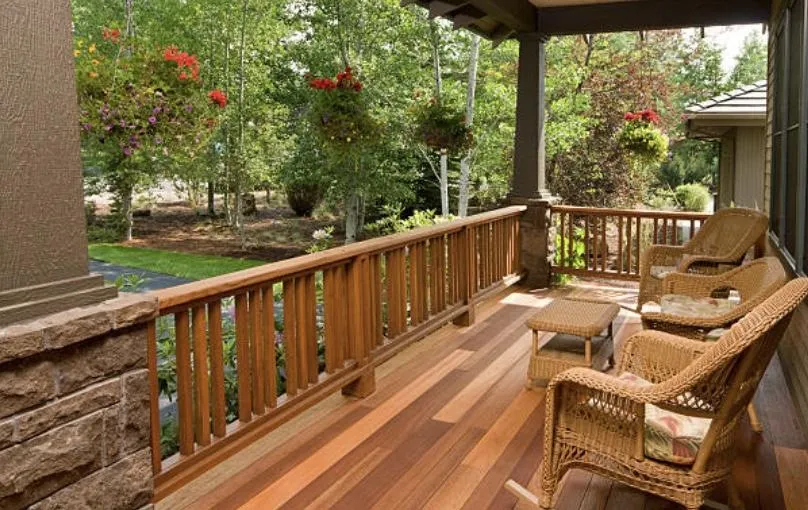
Exploring the Benefits of Composite Decking for Long-lasting Durability
Composite decking has gained immense popularity in recent years due to its outstanding durability and low maintenance requirements. One of the significant benefits of composite decking is its resistance to rot, decay, and insect damage, thanks to its composition of recycled plastics and wood fibers. Unlike natural wood, composite decking does not require regular sealing, staining, or painting to maintain its appearance.
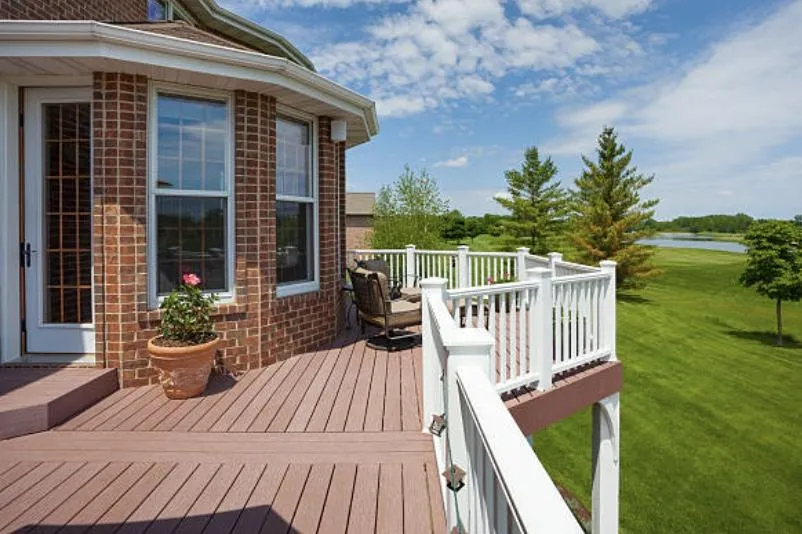
It is highly resistant to fading, staining, and warping, making it an excellent choice for areas with high moisture or harsh weather conditions. Additionally, composite decking is available in a wide range of colors, textures, and finishes, allowing homeowners to achieve the desired look without sacrificing durability. While composite decking tends to have a higher upfront cost compared to natural wood, its long-term benefits, including its longevity and minimal maintenance requirements, make it a compelling option for those seeking a durable and hassle-free patio deck solution.
Understanding the Advantages of PVC Decking for Low-Maintenance Outdoor Spaces
PVC decking is an excellent choice for homeowners seeking a low-maintenance outdoor space. One of the key advantages of PVC decking is its remarkable durability and resistance to moisture, rot, and insect damage. Unlike natural wood or composite decking, PVC decking does not absorb water, making it highly resistant to mold and mildew growth. This makes it particularly suitable for areas with high humidity or frequent exposure to water, such as around pools or in coastal regions.

Another significant advantage of PVC decking is its low-maintenance nature. It requires no sealing, staining, or painting, and can be easily cleaned with soap and water. PVC decking is also highly resistant to fading, staining, and scratching, ensuring a long-lasting and attractive outdoor space. While PVC decking may have a higher upfront cost, its longevity, durability, and minimal maintenance requirements make it a cost-effective choice in the long run for homeowners looking to enjoy a beautiful, hassle-free patio deck.
Factors to Consider When Selecting Decking Materials for Your Climate
When choosing decking materials for your patio, it is essential to consider the climate in which you live. Different climates present unique challenges and considerations that can impact the performance and longevity of your deck. In regions with hot and dry climates, for example, decking materials that resist fading and are less prone to heat absorption may be preferable. In contrast, areas with high humidity or frequent rainfall require decking materials with excellent moisture resistance to prevent mold, rot, and warping.

Additionally, coastal regions demand materials that can withstand saltwater exposure and resist corrosion. By understanding the specific climate-related factors that can affect your deck, such as temperature fluctuations, humidity levels, precipitation, and exposure to the elements, you can make an informed decision and choose decking materials that are best suited for your particular climate. Taking these factors into account will help ensure that your patio deck not only looks beautiful but also stands the test of time in your specific climate conditions.
Sustainable Decking Options: Eco-Friendly Choices for a Greener Patio
In today's environmentally conscious world, sustainable decking options have become increasingly popular among homeowners. Choosing eco-friendly decking materials allows you to create a greener patio while reducing your carbon footprint. One sustainable option is composite decking made from recycled materials, such as reclaimed wood fibers and recycled plastics.

By utilizing recycled materials, composite decking helps reduce deforestation and landfill waste. Another eco-friendly choice is bamboo decking, known for its fast growth and renewability. Bamboo is a highly sustainable material that can be harvested without causing harm to the environment. Additionally, some decking materials are manufactured using sustainable production processes that minimize energy consumption and emissions. By opting for sustainable decking options, you can enjoy a beautiful patio while contributing to the preservation of our planet.
Enhancing Aesthetics: Choosing Decking Materials to Match Your Home's Style
When selecting decking materials for your patio, it is important to consider the aesthetics and how they will complement your home's style. Decking materials come in a wide range of colors, finishes, and textures, allowing you to achieve the desired look and seamlessly integrate your patio with the existing architecture. For a classic and timeless appeal, natural wood decking offers warmth and natural beauty that can complement various home styles.

On the other hand, if you prefer a more contemporary or modern look, composite or PVC decking with sleek lines and a variety of color options may be the ideal choice. Additionally, some decking materials can be customized to mimic the appearance of natural wood while providing the benefits of low maintenance and durability. By selecting decking materials that align with your home's style, you can create a cohesive and visually appealing outdoor space that seamlessly blends with the overall aesthetic of your property.
Budget-Friendly Decking Options: Finding Affordable Materials without Sacrificing Quality
If you're working with a limited budget for your patio deck project, rest assured that there are budget-friendly decking options available that don't compromise on quality. One such option is pressure-treated lumber, which is widely recognized for its affordability and durability. Pressure-treated wood is treated to resist rot, decay, and insect damage, making it a cost-effective choice for many homeowners.

Another budget-friendly option is composite decking, which offers the look and feel of natural wood but requires less maintenance and lasts longer. While composite decking may have a higher upfront cost than pressure-treated wood, its long-term durability and reduced maintenance requirements can result in significant cost savings over time. Additionally, some manufacturers offer budget-friendly lines of composite decking that provide an excellent balance of quality and affordability. By exploring these budget-friendly decking options, you can create a beautiful and functional patio deck that fits within your financial constraints without compromising on quality.
Maintenance Tips for Different Decking Materials: Ensuring Longevity and Beauty
To ensure the longevity and beauty of your patio deck, proper maintenance is essential regardless of the decking material you choose. For natural wood decking, regular cleaning and sealing are crucial to protect it from moisture, UV rays, and fungal growth. This involves annual cleaning with mild detergent and water, followed by the application of a sealant or stain to prevent warping, splintering, and fading.

Composite and PVC decking, on the other hand, require less maintenance but still benefit from routine cleaning. Simply using a mild soap and water solution, along with a soft-bristle brush, can remove dirt and debris. It's important to avoid using harsh chemicals or abrasive cleaning tools that may damage the surface. Additionally, it's a good practice to inspect your deck regularly, looking for any signs of wear, loose fasteners, or damage that may need repair. By following these maintenance tips specific to your decking material, you can ensure the long-lasting beauty and performance of your patio deck for years to come.
Expert Advice on Selecting the Right Decking Materials for Your Specific Needs
In conclusion, selecting the right decking materials for your specific needs is a critical decision that can greatly impact the outcome of your patio deck project. By considering factors such as durability, maintenance requirements, climate suitability, aesthetics, and budget, you can make an informed choice that aligns with your preferences and lifestyle.

However, if you're seeking expert guidance and professional assistance throughout the process, look no further than Magic Man Landscaping and Construction. With their extensive experience and commitment to excellence, they can provide valuable advice on selecting the perfect decking materials tailored to your specific needs. Whether you're looking for natural wood, composite, or PVC decking, their team will ensure exceptional craftsmanship and a seamless installation process. Trust Magic Man Landscaping and Construction to bring your vision to life and create a stunning patio deck that exceeds your expectations. Contact them today to embark on your decking journey with confidence.


